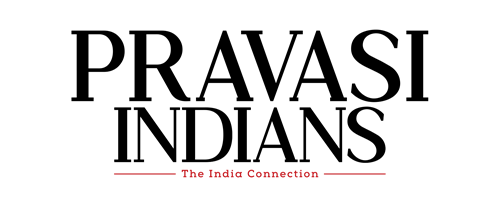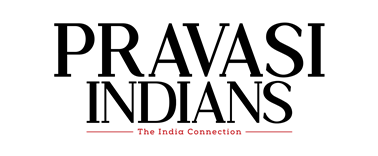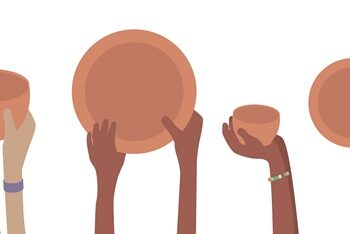While international agencies used inadequate sample size and methodology to determine the extent of poverty in India, the government needs to focus more on the ground reality than official data
BY AMARENDRA KISHORE
The poverty status of India has now become a contentious issue. The statistics presented by some independent agencies that monitor worldwide economic conditions and poverty put forth a distressing perspective. The situation arises due to the fact that figures in one report contradict those in another. The Multidimensional Poverty Index (MDPI) compiled jointly by the United Nations Development Programme (UNDP) and the Oxford Poverty and Human Development Initiative (OPHI) reveals that 41.5 crore people exited poverty in India during the 15-year period between 2005-06 and 2019-21, out of which two-thirds exited in the first 10 years, and the remaining onethird in the next five years.
On the other hand, a joint report released by Concern Worldwide (CWW), an Irish aid agency, and Welt Hunger Hilfe (Welthungerhilfe), a German organisation, discloses that India has fallen six positions in the 2022 Global Hunger Index (GHI), being ranked 107th out of 121 countries. The ranking is worse than all countries in the South Asian region except war-torn Afghanistan. The report has significance as it captures three dimensions of hunger—insufficient availability of food, shortfalls in the nutritional status of children, and child mortality.
In hunger statistics, India stands lower than neighbours Pakistan and Nepal. In this index, the best position in South Asia is occupied by Sri Lanka, ranked 64th; Nepal is at 81st place and Bangladesh at 84th. Even Sudan fares better than India.
It is noteworthy that since 2000, the GHI is released every year to highlight countrywise poverty status so that appropriate technical solutions can be applied to achieve the goal of global zero hunger by 2030. It is one of the Sustainable Development Goals (SDGs) of the United Nations. This index is determined on the basis of micronutrients instead of calories, the popular scale of measuring nourishment.
As soon as the GHI report came out, the opposition parties in India got an opportunity to confront the government. However, it was a well-known fact that during the UPA regime, the rations allocated for the poor were frequently sent to Nepal- Bangladesh through crores of fake ration cards. Even the blackmarketing of rations at village level was a gigantic challenge for local administrations across the country. This malpractice has reportedly been stopped, according to the present government. This correction is said to have eradicated extreme poverty, and improved the implementation of the right to food. The government criticised the report for not taking note of these outcomes. The government claims that it seems to be a well-planned conspiracy through malicious reports to malign India’s image globally.
The Indian government has rejected the report outright. But this does not mean that Welthungerhilfe and Concern Worldwide have no credibility. Their reports have been recognised all over the world for long. Welthungerhilfe is financially supported in its work by institutional grants from the United Nations’ World Food Programme (WFP), the German Federal Ministry for Economic Cooperation and Development (BMZ), the Deutsche Gesellschaftfür Internationale Zusammenarbeit (GIZ), the EU Commission and the German Federal Foreign Office (AA) that endorse the authenticity of its work. The CWW also delivers life-saving and life-changing interventions to the world’s poorest and most vulnerable people. From rapid emergency response to innovative development programming, CWW reaches the most remote places to make sure that no one is left behind. Emergency relief in Africa, Asia and the Caribbean, covering health, hunger and humanitarian response in emergencies, form the remit of CWW.
However, at a time when the entire world is praising the Indian economy and government efforts to eradicate poverty as being successful, the negative picture of India in the GHI appears unconvincing. Recent reports by the World Bank and the International Monetary Fund (IMF) are also raising questions on the GHI episode.
Recently, the World Bank president admitted that the way India has extended support to the poor and disadvantaged people during the Covid-19 pandemic has been extraordinary. More recently, the IMF has also praised the Digital India campaign and called the Direct Cash Transfer Scheme (DCTS) exemplary.
The question arises, which data and conclusions should be trusted? The manner in which Sri Lanka has been ranked 64th in the report is surprising. Sri Lanka has been going through politico-economic instability for a long time due to Chinese interference. There was a situation of mass revolt due to high prices of foodgrains and other essential commodities. The situation was controlled by food supplied by India.
Is it right to reject this report? Is there any mala fide intention on the part of these international organisations regarding India? The Government of India argues that many issues have been overlooked in this report that reflect the biases while undertaking this study. First, the data is collected from a minuscule sample for a country of India’s size through Food Insecurity Experience Scale (FIES) to compute Proportion of Undernourished (PoU), the percentage of the population whose consumption falls below the Minimum Dietary Energy Requirement (MDER) value. This is biased as well as unethical. The government had also mentioned media reports that said Concern Worldwide and Welt Hunger Hilfe had evidently not done due diligence before releasing the report.
It is evident that such questions do not search for facts based on relevant information about the delivery of nutritional support and assurance of food security by the government, especially during an epidemic. The government of India has strong views and concerns over the right to food, keeping in mind that this is a single way to root out poverty. So, the government concludes that availability of grains in FCI godowns, public accessibility to fair price shops to procure wheat and rice, utilisation of grains through a proper distribution scheme and stability of food stocks have not been rationally evaluated in this report.
This has automatically raised questions about the credibility of the report. It is ironical that on the one hand the World Bank and the IMF are praising the Government of India’s direct cash transfer and food security schemes, and on the other India is being ranked seven places lower than last year in the GHI. The reason for this irony is that out of the four indicators based on which the Hunger Index is prepared, three are related to children, which does not give information about the entire population. The index is an erroneous measure of hunger and suffers from serious methodological issues. Three out of the four indicators used for calculation of the index are related to the health of children and cannot be representative of the entire population. The fourth and most important estimate of Proportion of Undernourished (PoU) population is based on an opinion poll conducted on a very small sample size of 3,000.
It is noteworthy that in the past eight and a half years, the Narendra Modi government has made extensive reforms in the public distribution system. In the process of linking ration cards with Aadhaar, 4.7 crore ration cards were found to be fake. So far more than 20 crore ration cards have been linked with Aadhaar. Point of Sale (POS) machines have been installed at every fair price shop so that no person other than the beneficiary can draw rations. This has ended the blackmarketing of subsidised foodgrains. Today, 75 percent of the rural and 50 percent of the urban population is covered under national food security: 81.35 crore people are being provided foodgrains at subsidised rates. After the implementation of One Nation One Ration Card, the beneficiaries can pick up their foodgrains near their homes or from the ration shop of their choice.
The government emphasises that several steps were taken during the critical period of the Covid-19 lockdowns in 2020 and 2021 to ensure nationwide food security. The government had announced the distribution of free foodgrains (rice/ wheat) to 80 crore people; thereby effectively doubling the quantity of monthly foodgrains delivered to the National Food Security Act (NFSA) households. So far, under the Pradhan Mantri Garib Kalyan Anna Yojana (PM-GKAY) scheme, the government has allocated almost 1,121 lakh metric tonnes of foodgrains to the states/UTs, equivalent to about ₹3.91 lakh crore in food subsidy. The scheme has been extended till December 2022.
However, the government’s arguments are open to debate and discussion. Is it right to accept the availability of foodgrains and their proper distribution as an effective way to eradicate poverty at the grassroots level? The government’s arguments differ widely from the standard indicators of health-education and living standards under the Multidimensional Poverty Index (MDPI). Regrettably, the most vulnerable sections of Indian society have had to bear the brunt of adverse effects of the pandemic. It is also a stark fact that India had been witnessing declining economic growth even before the pandemic. Budget 2021-22 saw virtually no change in allocations for health, food security, pensions, and actually saw decreased spending in some sectors such as education which is one of the fundamental rights in the Constitution.
(The writer is a Delhi-based development journalist and expert on tribal issues of India and southeast Asia)






